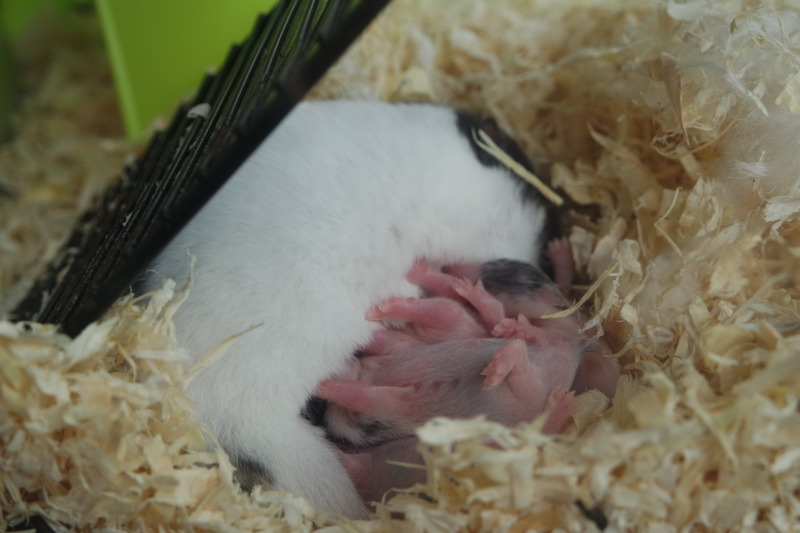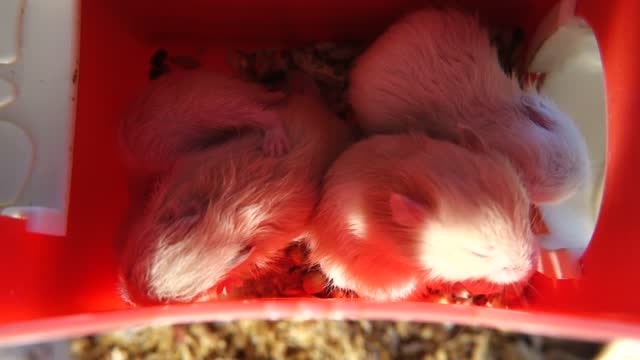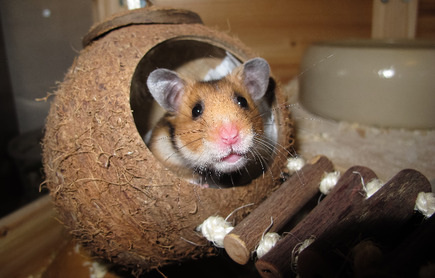You may have the idea of keeping more than one hamster in your cage.
But, it is not appropriate; according to various research, one should only keep a single hamster in a cage. Keeping multiple hamsters in the cage can cause fighting to death, reproduction, health issues, and more.
Syrian hamsters are the main contenders; they are solitary they can not live together, whether same-sex or different. However, dwarf hamsters are social; thus, they can live together in the same cage, but it is advised to keep the same sex as a pair to control reproduction.
Lastly, it is recommended not to keep different species of hamster in the same cage, as it cause fighting, injuries, and death.
Reason 1: Solitary Nature

Hamsters are naturally solitary creatures. In the wild, they live alone in their burrows, venturing to forage for food at night. This solitary behavior is deeply ingrained in their genetics and behavior. Recent research emphasizes the solitary behavior of hamsters, attributing it to their territorial instincts.
When forced to share territory, hamsters may become territorial and display aggressive behaviors, leading to fights that can cause serious injuries or even death.
The stress of social interactions can manifest in behaviors such as over-grooming, self-mutilation, and reduced appetite.
Reason 2: Reproduction

One primary reason hamsters are kept separate is their rapid and prolific breeding. Hamsters can reproduce startlingly, with a gestation period as short as 16 days. If a male and female hamster are kept together, their population can quickly spiral out of control, leading to overpopulation and the risk of neglect.
When in season, female hamsters release specific pheromones to signal their fertility and readiness to mate. Male hamsters detect these pheromones and are naturally drawn to the scent of a receptive female.
So, when multiple hamsters are housed together, these reproductive pheromones can have unintended consequences.
Research has shown that the presence of reproductive pheromones in a shared living space can lead to increased stress and aggression among hamsters.
Moreover, female hamsters can become pregnant shortly after giving birth, leading to further stress and potential health issues for both the mother and the babies. It’s best to avoid unintentional breeding by keeping hamsters separate.
Reason 3: Space Requirements

Hamsters have specific space requirements for their physical and psychological well-being. Enough space for exercise, exploration, and nesting is crucial for their well-being.
When multiple hamsters are housed together, the available space is divided, which can lead to restricted movement and behavioral abnormalities. Sometimes also leading to fights that can cause serious injuries.
Properly sized individual enclosures allow hamsters to exhibit their natural behaviors without the stress of competition for resources.
A study highlighting the importance of providing sufficient living space for hamsters suggests that hamsters must have an adequate environment for their grooming, climbing, hiding and digging, etc. Inadequate space can lead to stress, anxiety, and reduced physical activity. Here is an article on necessary items for hamsters.
When multiple hamsters are forced to share limited space, it can escalate territorial disputes leading to boredom, increased stress, and the development of stereotypical behaviors, such as incessant pacing or over-grooming.
The focus of being around another hamster can compromise their overall well-being, potentially leading to a shorter lifespan. Here is the cage size guide for hamsters.
Reason 4: Aggression & Dominance
Territorial disputes and aggression are common when hamsters are housed together. Hamsters have a strong instinct to establish and defend their territory, and this behavior can escalate into physical confrontations when they are forced to share space.
These fights can result in injuries such as bites, scratches, and even more severe harm. Keeping hamsters separate minimizes the risk of aggression and ensures their safety and well-being.
A study conducted by Dr. Gernot Kuhnen explores the effects of cage size and group size on golden hamster behavior. The research indicates that overcrowding can lead to heightened aggression and stress-related behaviors.
Dominant hamsters may monopolize resources such as food, water, and hiding spots, causing submissive hamsters to experience chronic stress, which affects thermoregulation in the cage.
Reason 5: Stress and Health Issues

Stress has a significant impact on hamster health. When hamsters are placed in a group setting, they may experience constant stress due to the presence of other hamsters.
This stress weakens their immune system, making them more susceptible to illnesses. Furthermore, stress-induced behaviors can lead to over-grooming, which may result in fur loss and skin problems.
Maintaining a stress-free environment by housing hamsters individually contributes to their overall health and happiness.
Additionally, overcrowding is also linked to disease transmission in small mammals. When housed together, hamsters are more susceptible to infections, parasites, and other health issues due to close proximity and reduced hygiene.
Maintaining proper hygiene and preventing the spread of illness becomes challenging in multi-hamster setups. Responsible pet ownership includes preventing unintended litters, which can only be achieved by individually housing hamsters.
Reason 6: Personalized Care

Personalized care is essential for ensuring the well-being and contentment of your hamster companions! Like humans, each hamster has unique needs and preferences regarding food, exercise, and enrichment. Syrian hamsters, for example, require more space due to their solitary nature, while dwarf hamsters are more social.
That’s why housing hamsters separately allows you to provide tailored care to each individual. You can monitor their eating habits, address health issues promptly, and create an environment that suits their behavioral traits.
Moreover, as your hamster ages, its needs will change. It will require more care as compared to a young hamster. Regular observation, flexibility, and a genuine commitment to meeting your hamster’s needs will create a solid and joyful bond between you and your small furry friend.
Reason 7: Compatibility Issues
Contrary to popular belief, hamsters do not require the companionship of their kind to be happy. While some species of rodents are social animals that thrive in groups, hamsters are not among them. Attempts to introduce hamsters to each other can result in stress, aggression, and compromised quality of life.
A research study focusing on the effect of sex differences in dominance relationships suggests that hamsters have non-compatible personalities. When put together, they strive for dominance which can result in constant conflict and aggression.
This can lead to injuries and mental distress for the hamsters involved. Even if the two hamsters seem to get along initially, their dynamics can change, leading to sudden conflicts.
The unpredictable nature of hamster interactions makes ensuring a harmonious multi-hamster environment challenging. Therefore, providing ample human interaction and a stimulating environment is more than enough to keep hamsters engaged and content.

